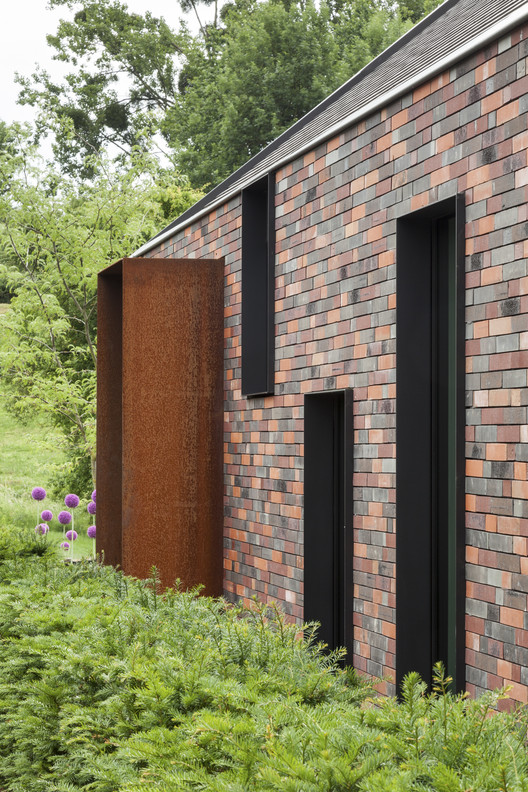
-
Architects: sam architects
- Year: 2017
-
Manufacturers: ELEVATE, Wienerberger, Carrière du Hainaut, Casabath, Delta Light, Heylen Trading, Sapa Building System International NV, Vola
-
Lead Architect: Krist Michiels

Text description provided by the architects. An outdated long-walled farm on a plot on the edge of the center of Kerniel transformed into a contemporary H-shaped dwelling. That is how this single-family home can be best described. The house is situated in a protected landscape with the typical features of Haspengouw, an area that consists of small villages in a rural landscape with fruit trees. An old farm with a long façade was situated on the plot (90 ares). The farm itself was not protected but was considered as a landmark valuable element considered by the Agentschap Onroerend Erfgoed (an organization for the protection of architectural heritage in Flanders, Belgium).









































